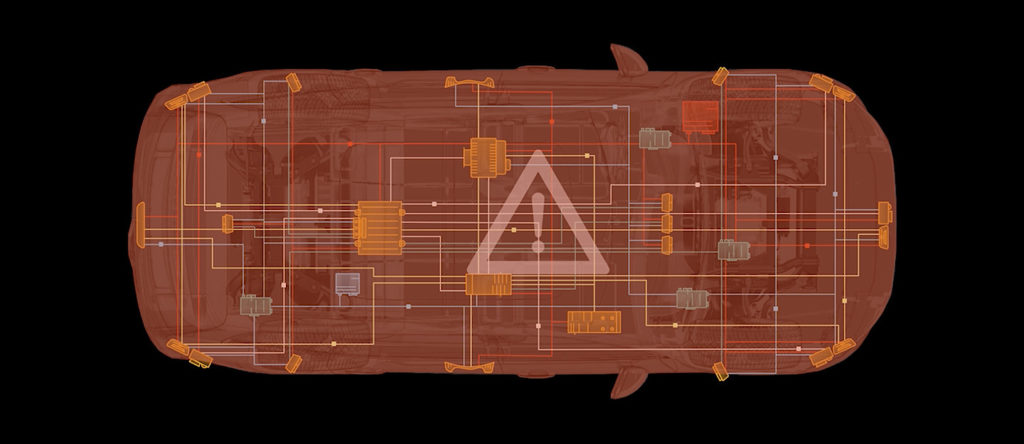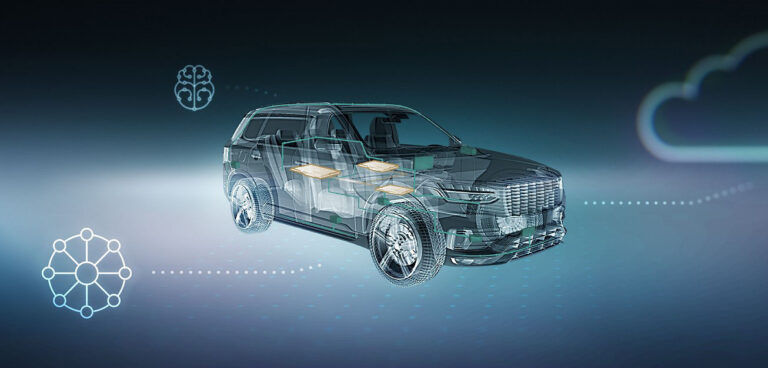Driverless vehicles are constantly collecting valuable data. Whether that’s data about the width of the road, other surrounding vehicles or pedestrians crossing the street, or information on how the car is handling the road surface – it’s taking it all in and it doesn’t stop. Autonomous vehicles are information rich and are increasingly defined by software that is generating vast amounts of data to train its artificially intelligent (AI) algorithms – all fundamental ingredients needed for cars to drive themselves safely without any human assistance.
With autonomous driving, vehicles are becoming the largest source of data in the world. In the time it takes to blink (around a tenth of a second), connected vehicles exchange 15,000 pieces of data. By 2020, this figure is expected to rise to 200,000 pieces of data each second. With data flooding in at an exponential rate, the big challenge for the automotive industry will be how they handle all of it as data begins driving the era of autonomous mobility.
 A new era
A new era
Remember the cars of the 1950s? The second-generation Chevrolet Bel Air, that was a thing of beauty, with its Ferrari-inspired grille and chrome headliner bands. Not only was this a vision on the outside, but a paragon of simplicity on the inside—at least when it comes to its electrical system. No data was being collected, and its sole purpose was to get you from A to B (in style). Fast forward almost 70 years to 2018, and autonomous cars are becoming data-harvesting supercomputers, with vehicle electrical systems therefore more complex than they have ever been. This deluge of data is forcing a change.
The architecture of a vehicle defines the relationship between its software, hardware and computing power. It’s all well and good collecting data to advance autonomous driving systems, but without the right infrastructure in place to process the data, it can’t be analyzed in real time to improve the driver’s experience and safety. It’s clear that traditional approaches to vehicle architecture are no longer viable options as autonomous cars have become a reality, and data is becoming the new oil.
In existing passenger cars today, the electrical and electronic architecture is already the third heaviest system after the chassis and powertrain. It has grown significantly over the years – firstly as comfort, safety and environmental features increased, which led to more and more sensors, actuators and electronic control units, and then in the 1990s multiplexed networks were introduced to handle the increasing amount of data. But in the autonomous driving era we need a revolution.
Fundamentally, architectures need to get smarter to support the growth in data and complexity of these systems. The additional number of sensors and actuators and the redundancy needed to fulfil the requirements of functional safety cannot be integrated with traditional models, which don’t have the capacity or computing power required to run the vehicle’s complex software algorithms, and whose legacy networking infrastructure cannot support the data transfer speeds of the future. The system would simply be too expensive, too heavy and impossible to package in the existing space. This is holding back time spent educating AI in autonomous cars and innovations that will help develop the next era of connected cars.
The vehicle architecture as we know it needs to evolve to take advantage of cloud connectivity and defined by software to reduce the weight of vehicles and support these new complexities for a more failsafe design.
Data: The brain food for autonomous cars
Smart vehicle architectures need to prioritize data and communication protocols. Big data is vital for developing safer, more intuitive, driverless transport systems that will transform our lives. Before any driverless car can safely navigate on the road, engineers must first train the artificial intelligence algorithms that enable the car to drive itself. Currently, this data is gathered from a variety of sensors around the car, GPS receivers and short-range wireless network interfaces, to monitor its surroundings. These sensors gather data to teach the vehicle different driving scenarios. All data is valuable to help the AI recognize hazardous objects on the road, when to notify the driver of imminent mechanical issues and how to interact with other cars on the road, for example.
The AI enabling autonomous vehicles must be trained on the incredible diversity of situations the vehicle could experience – this is crucial, so they get a human-like view of the world. This requires potentially millions or even billions of hours of driving data to ensure the AI can recognize everything from emergency vehicles, pedestrians and animals running across the road, to construction sites and traffic light systems.
The rule with autonomous mobility is the bigger big data is, the greater the opportunities for autonomous technology to get better to revolutionize driving as we know it today. It’s important to note that these components go hand in hand and cannot be isolated.
The shift to autonomy
As the automotive industry takes a leading position within the Internet of Things, the data generated, compute needs and related challenges (and opportunities) are only going to continue growing. In the time it’s taken you to read this article alone, an autonomous car of today has already gathered at least 45 million pieces of data to feed its AI algorithms.
It’s no doubt that the future of autonomous mobility hinges on a complete overhaul and re-architecture of the nervous system of a vehicle. The future smart vehicle architecture will be one that will deliver a fast, safe and reliable distribution of data and power. The automotive players that achieve this successfully will be the ones that win the race to develop the world’s safest, fully autonomous vehicles.

By Christian Schäfer, director of electrical and electronic Systems, Aptiv


